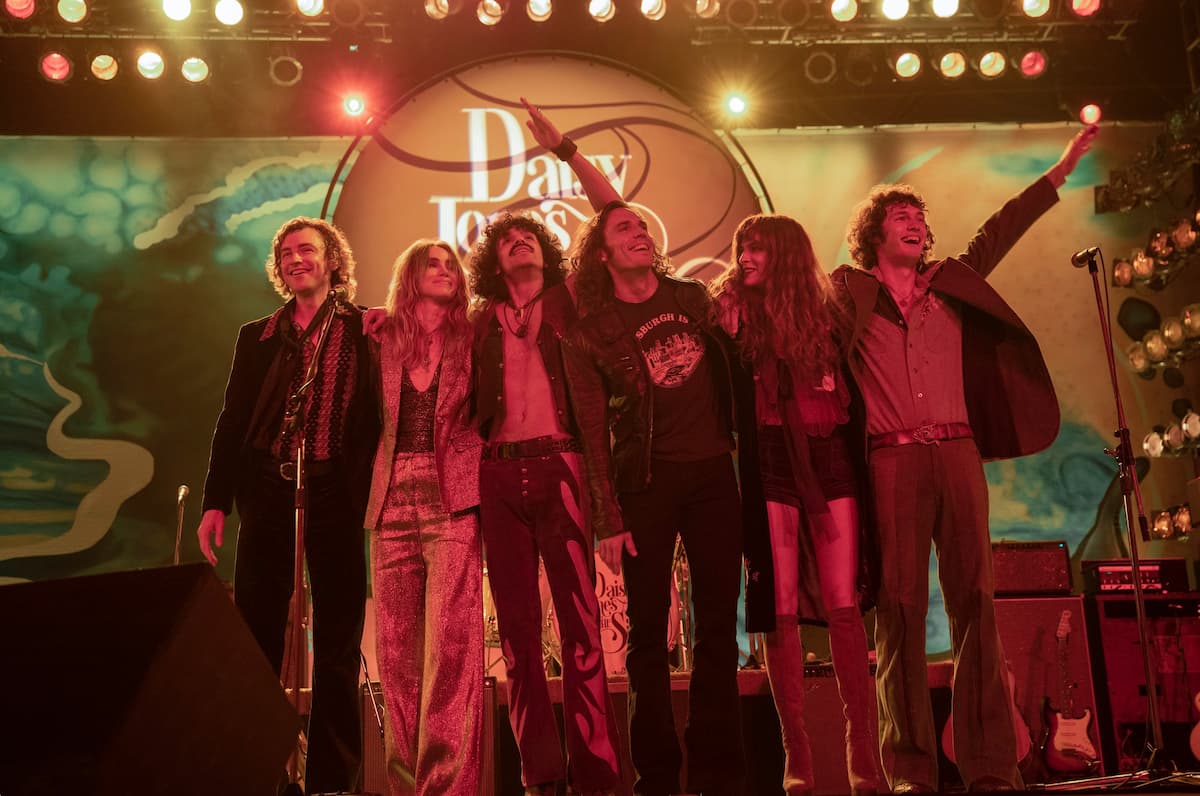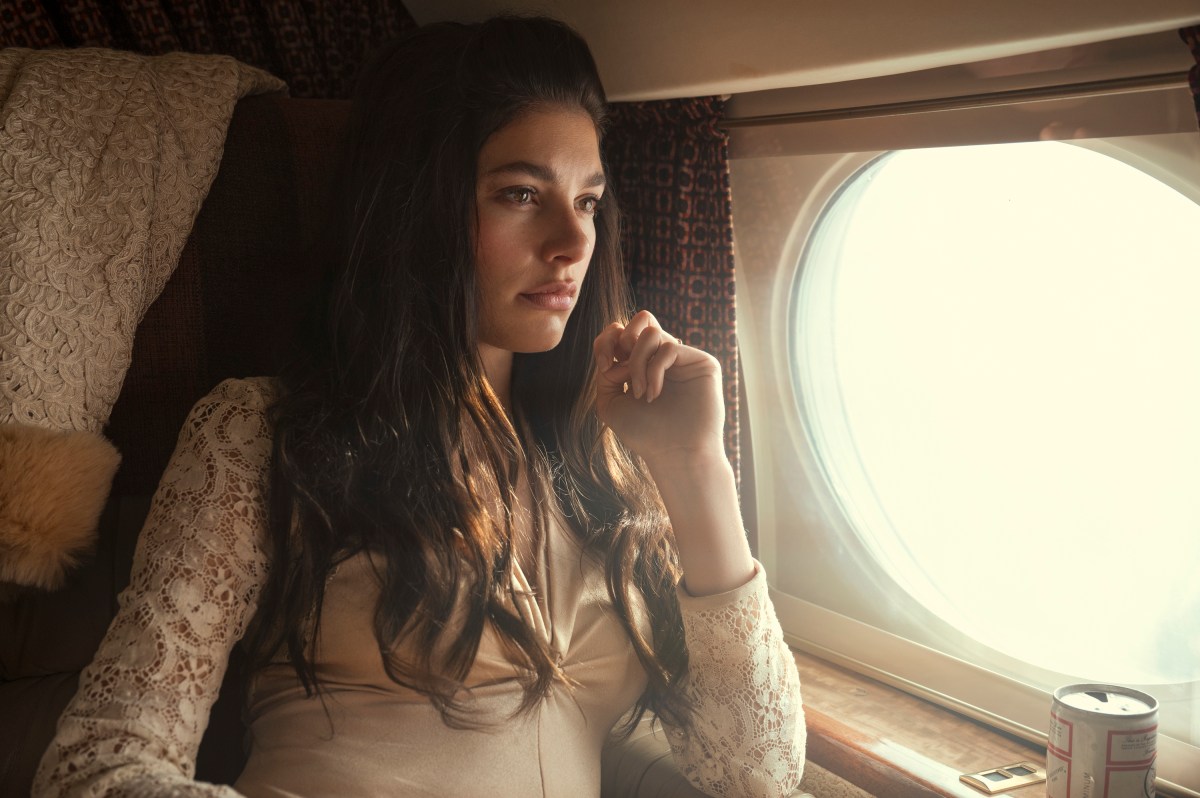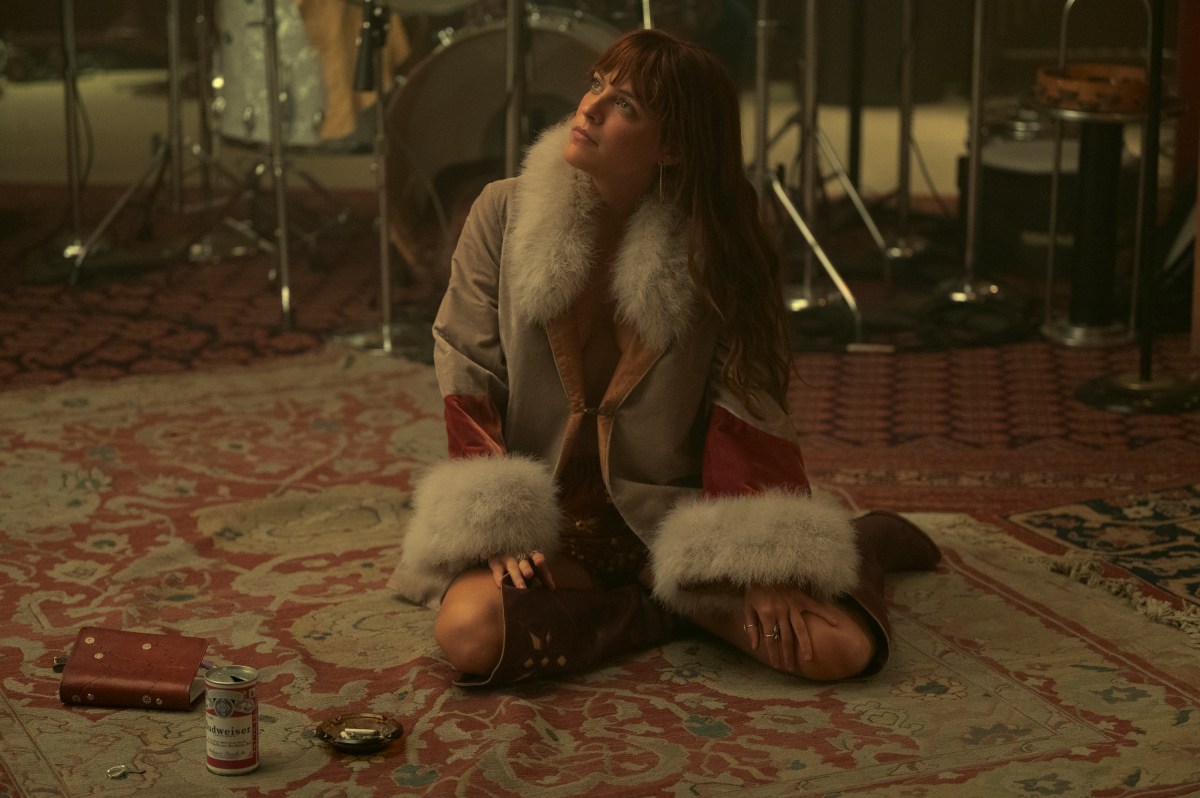‘Daisy Jones & The Six’ Review: A Tumultuous Tale of Sex, Drugs, and Rock & Roll
3.5/5 stars.

When it comes to modern page-to-screen adaptations, author Taylor Jenkins Reid is shaping up to be the name to watch—her novel The Seven Husbands of Evelyn Hugo has a following (especially on social media) so devoted it’s secured a film adaption that everyone and their mother is casting on Twitter. Before Evelyn Hugo makes its way to our screens, though, Jenkins Reid has yet another book receiving the Hollywood treatment: Daisy Jones & The Six, which has been adapted as a limited series whose first three episodes will debut on Amazon Prime Video this Friday.
Though the production design leaves something to be desired and the many changes from the book may upset diehard fans, Riley Keough’s turn as the eponymous Daisy and a soundtrack chock full of dazzling original songs make Daisy Jones & The Six must-watch TV.
Starring Keough and Sam Claflin, Daisy Jones & The Six (based on the book, which is, in turn, heavily inspired by the real lives of Fleetwood Mac’s Stevie Nicks and Lindsey Buckingham) follows the spoiled but flighty Daisy (Keough), an aspiring singer-songwriter who lives a colorful but unfulfilling live in seedy ’70s Los Angeles. Her life is forever changed when her label ends up pairing her as a vocalist for rock band The Six, led by broody, no-nonsense frontman Billy Dunne (Claflin). Though Daisy and Billy never stop fighting like cats and dogs, it’s quickly clear that they’re a musical match made in heaven, and the series chronicles their tumultuous relationship (made all the more complicated by Billy’s wife Camila) over the course of their band’s short-lived career.
For those who haven’t read the book, Jenkins Reid’s novel is an electric, tumultuous one, whose strengths hinge on the complicated characters and the messy interwoven relationships that inspire their music. Daisy Jones unquestionably captures the fierce spirit and vibrant energy of the novel, thanks in large part to the original songs, of which the Daisy Jones team has written an entire album. The track production (courtesy of producer Blake Mills) is undeniably impressive, though it should be noted that some of the lyrics have lost some poetry, particularly those of “Look at Us Now (Honeycomb)” and “Regret Me,” both of which are songs integral to themes and character beats in the novel.
Still, even some of the weaker lyrics don’t stop the band’s fictional album Aurora (which can be streamed in its entirety on all major streaming platforms) from being a genuinely impressive one, and entirely believable as something that might’ve ruled the charts in the late ’70s. The costume design (from Denise Wingate) is also as period-appropriate as it is chic: Daisy’s caftans, Karen’s power suits, Camila’s long skirts, and Simone’s jumpsuits are all wonderful reflections of not just iconic ’70s fashion but specific character beats.
The same praise cannot be extended, unfortunately, to the hair and makeup design. The show uses a flash-forward tell-all interview framing device, which features some sketchy wigs and faux facial hair for the supposedly “aged-up” characters. It’s particularly disappointing to see disco pioneer Simone (Nabiyah Be) so underserved by hair and wig design, given the countless iconic hairstyles made popular in the ’70s, particularly in queer and Black spaces.
All of the aesthetic elements are just that, though—aesthetic trappings that (though beneficial to storytelling) aren’t worth much without strong, consistent writing to match the strength of the source material and cast. Unfortunately, though, this is where Daisy Jones & The Six runs into the most trouble, struggling with pacing in the first two episodes most severely, but eventually evening out and ending on a high note that’s marred in crucial places by thematic and narrative changes from the novel.
Certainly, the show’s writers (led by co-showrunners Will Graham and Scot Neustadter) are well within their rights to make as many changes as they want to the source material, but the changes that are made are almost entirely for the worse. The result is a thinner, less nuanced version of a story that is perfectly serviceable for non-book readers, but will undoubtedly cause some friction for those already familiar with the source material.
While going into explicit detail about some of the more significant narrative changes (especially those that occur towards the back half of the series) would be delving into spoiler territory, a consistent issue with the changes from the novel are those made to the dynamics in the relationship between Daisy, Billy, and Billy’s wife Camila, with whom he has a daughter. In the novel, Billy and Daisy’s relationship is a deeply intense one that’s never fully realized outside of a one-sided kiss on Daisy’s part—and again, without going into spoilers, the nature of their relationship is decidedly … not the same in the series.

In turn, changes are also made to Camila’s character, and her relationship with Billy. In the book, Camila functions as a sort of guiding light in Billy’s life—a reason to say sober, a reason to write music, and a reason not to pursue a relationship with Daisy. But while she’s originally written as steadfast, unflinching, and rock-solid in her own right, the show’s approach to Camila feels frustratingly molded around allowing space for a more obvious, prominent Billy/Daisy romance.
Though the presence of a true love triangle will undoubtedly be a draw for viewers looking for a torrid romance with their ’70s rock docuseries, those who savored the murky unpredictability of the pseudo-love triangle in the novel will be left disappointed. In the original version of the story, there’s an ever-present doubt and a cynicism towards whether or not Billy and Daisy getting together could really ever work out, and Billy’s undeniable devotion to Camila further complicates this already complicated question.
But the series’ interpretation of this plot is a more predictable, simplified one—again, serviceable for those not familiar with or attached to the source material, but disappointing for readers. There’s also an added storyline for Camila that feels like a particular betrayal of the character and a deliberate move to turn the viewer against her and in favor of a Billy/Daisy romance.

Aside from the slightly shifted dynamics between Daisy/Billy/Camila, the other most significant change to the novel is Simone’s role in the story—though thankfully, this is undoubtedly the most successful change made. Instead of simply a place for Daisy to crash and a shoulder to cry on, Simone is realized as a complicated young woman torn between her desire for fame and her blossoming romance with another woman, which prompts introspection about her queer identity, especially in public. This storyline is also gratifying in its acknowledgement of the influence that aforementioned Black and queer communities had on the birth of popularity of disco.
Most of the other band members from the novel remain relatively unchanged—boat-loving drummer Warren Rhodes becomes Warren Rojas (Sebastian Chacon), but the character is just as much of a lovable scene-stealer as he is in the book. Eddie Roundtree (Josh Whitehouse) is similarly unchanged in his role as a foil for Billy, and especially in the series finale, Whitehouse has some strong moments opposite Claflin and courtesy of Neustdater’s script, which is punctuated with consistently strong dialogue.
It’s Suki Waterhouse’s Karen who (second to perhaps Camila) suffers the most in the transition—losing the most nuance around her narrative of self-discovery, independence, and bond with Camila, swapped instead for a storyline in Graham lifted from the novel and emphasized drastically.

But where the writing may falter, the impressive ensemble cast of Daisy Jones & The Six, spearheaded by the ferocious Riley Keough as Daisy Jones, can elevate even the most frustrating of changes. As Daisy, Keough is mesmerizing, endearing, and heartbreaking all at once—taking a complicated, beloved character and more than doing justice to the nuances of her, at times, frustrating personality. Daisy, on paper, isn’t always easy to root for, but there’s so much charisma and charm that you can’t help but fall in love with her, and understand why Billy might risk everything to pursue her.
While at times uneven and frustrating (particularly for those familiar with the novel), there’s an undeniable magic and fire in Daisy Jones & The Six that makes it impossible to put down once you’ve gotten a taste—once the series makes it to episode three, it takes off like a shot and ends on a high note. Like the titular band itself, Daisy Jones & The Six may be rocky and plagued with melodrama, but at the end of the day, Riley Keough and the rest of the cast sell this epic tale of rock-n-roll heartbreak.
(featured image: Amazon Prime Video)
Have a tip we should know? [email protected]